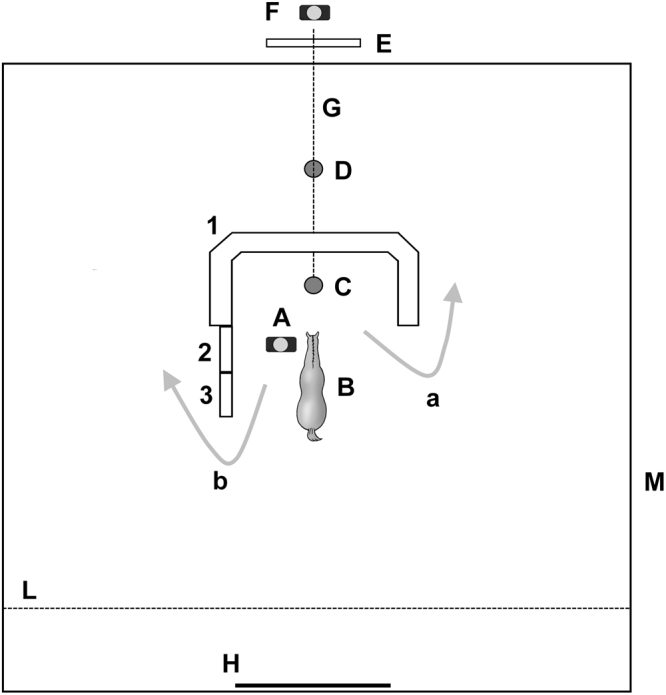Figure 1.

Apparatus used. A = experimenter who held the horse; B = starting position of the horse (position in which the horse was released); C = starting position of food bucket; D = final position of food bucket and horse after detouring obstacle; E = wooden panel outside the enclosure; F = experimenter who pulled the trolley and recorded the detour time; G = rope to pull the trolley; H = gate; L = invalidation line (positioned at 2 m from the entrance side of the enclosure); M = enclosure (16 × 16 m); 1 = U-shape obstacle; 2 and 3 = wooden panel (100 × 100 cm) added to base of obstacle to create asymmetry in Detour task 2. This figure has been already published on Baragli, P., Vitale, V., Paoletti, E., Sighieri, C., & Reddon, A. R. (2011). Detour behaviour in horses (Equus caballus). Journal of Ethology, 29(2),227–234 and is reproduced here with permission of Japan Ethological Society and Springer Japan.
